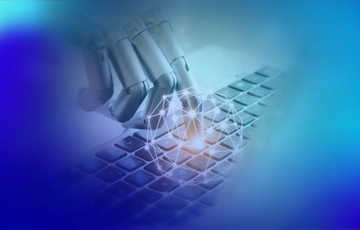As digital transformation progresses, it is normal for companies to implement resources that can optimize processes and management. When integrated, RPA leverages other technologies that contribute to the execution of the company’s tasks.
By itself, RPA is capable of bringing countless benefits to companies, such as greater productivity, process agility, and a reduction in errors and manual work.
However, when integrated with other technological resources, robotic process automation becomes more powerful. This path is a two-way street: robots amplify the benefits of other technologies. And at the same time, bots become capable of performing more complex tasks.
By combining robotic automation with other technologies, the organization becomes more competitive and effective. This is because the people, who are responsible for strategy and innovation, focus on activities that add value.
Free professionals from manual and repetitive activities. Discover how RPA integration leverages other technologies.
The integration of RPA with other technologies
Robotic automation integrates systems to automate tasks, enabling more efficient, agile, and productive execution. This integration allows different systems that the company already has or wants to acquire to work together.
For example, in a company that already has an ERP, RPA comes in handy to automate tasks performed by this system. Or to collect, process, and work with a large volume of data that will later be used by other technologies.
Another point in which RPA leverages other technologies is when there is no system integration and data migration occurs manually. RPA technology is able to access and transfer these files to other systems in an automated way.
How is the integration with RPA technology done?
System integration using RPA requires three essential steps: assessment, planning, and development.
- Assessment: a report that provides an understanding of the process in which the robot rpa will be implemented. Understanding the resources used, behavior trends, performance, and potential;
- Planning: evaluates the information presented in the assessment. This is where the best RPA integration solution will be defined, such as activities and efforts. As well as, the criteria for acceptance and performance mediation;
- In this step we will execute all the planning in an assisted operation to evaluate the execution. Thus, we will adjust the points of dissatisfaction until we achieve the expected results.
In fact, RPA leverages other technologies. But for this, it is necessary that the integration occurs gradually, in order to mitigate errors.
Artificial Intelligence and RPA working together
Artificial Intelligence is a resource that performs complex tasks that used to be performed by a human. However, AI is based on previous experiences. That is why data collection, transfer, and storage need to be correct. This is when RPA becomes so important. This solution provides the basis for artificial intelligence to act assertively.
Artificial intelligence working together with RPA provides greater pattern recognition. And, data identification and classification occurs effectively and more quickly. Exceptions, which require decision making, are best managed with the combination of RPA and AI.
While the robot rpa collects the information and sorts them, artificial intelligence is able to analyze questions based on rules and past experiences.
Integration between RPA and AI can generate reports, invoices, budgets, forecasts based on ERPs, and integrate customers or suppliers.
Analyze sales history, market trends, update profiles and interact with employees, schedule interviews or health consultationsCreating learning content, assessing learning progress, generating personalized answers to queries, solving problems, or providing follow-up answers are all possibilities that are generated by the combination of artificial intelligence and robotic process automation.
RPA leverages other technologies: machine learning
Regarding machine learning (ML), or machine learning, when integrated with RPA, it allows robots to learn from their experiences and improve their efficiency over time.
RPA powers machine learning by providing data that will support increasingly personalized tasks.
An example of the junction between RPA and ML, are the e-mails that can be automated. While the robots extract the information from the text of the e-mails, ML processes and categorizes it according to level of importance. Then it is up to the RPA to forward these e-mails to the responsible departments.
This is a very simple activity. However, when automated, it occurs with little or no human intervention. When performed manually, however, it is very time and effort consuming.
Another possibility is the creation of personalized and automated responses to consumer inquiries. Robots are able to provide information about consumer preferences, creating a personalized experience. While ML contributes to making the contact more and more its own, with an appropriate and recognizable language.
How to choose the best RPA to leverage other technologies?
In addition to Artificial Intelligence and Machine Learning, RPA leverages other technologies such as document management. In this way, combinations and integration optimize the end-to-end processes.
It is important to emphasize the importance of having a solution that offers the necessary support in implementation and customization. The simpler the tool, the easier the integration will be, especially if it is a low-code solution.
Relying on RobotEasy ensures that all integration happens efficiently and without damage. Besides offering a customizable solution capable of meeting your company’s demands, RobotEasy provides specialists throughout the automation project.
In this way, your company is guaranteed to gain competitive advantages by using RPA in combination with other technologies.


